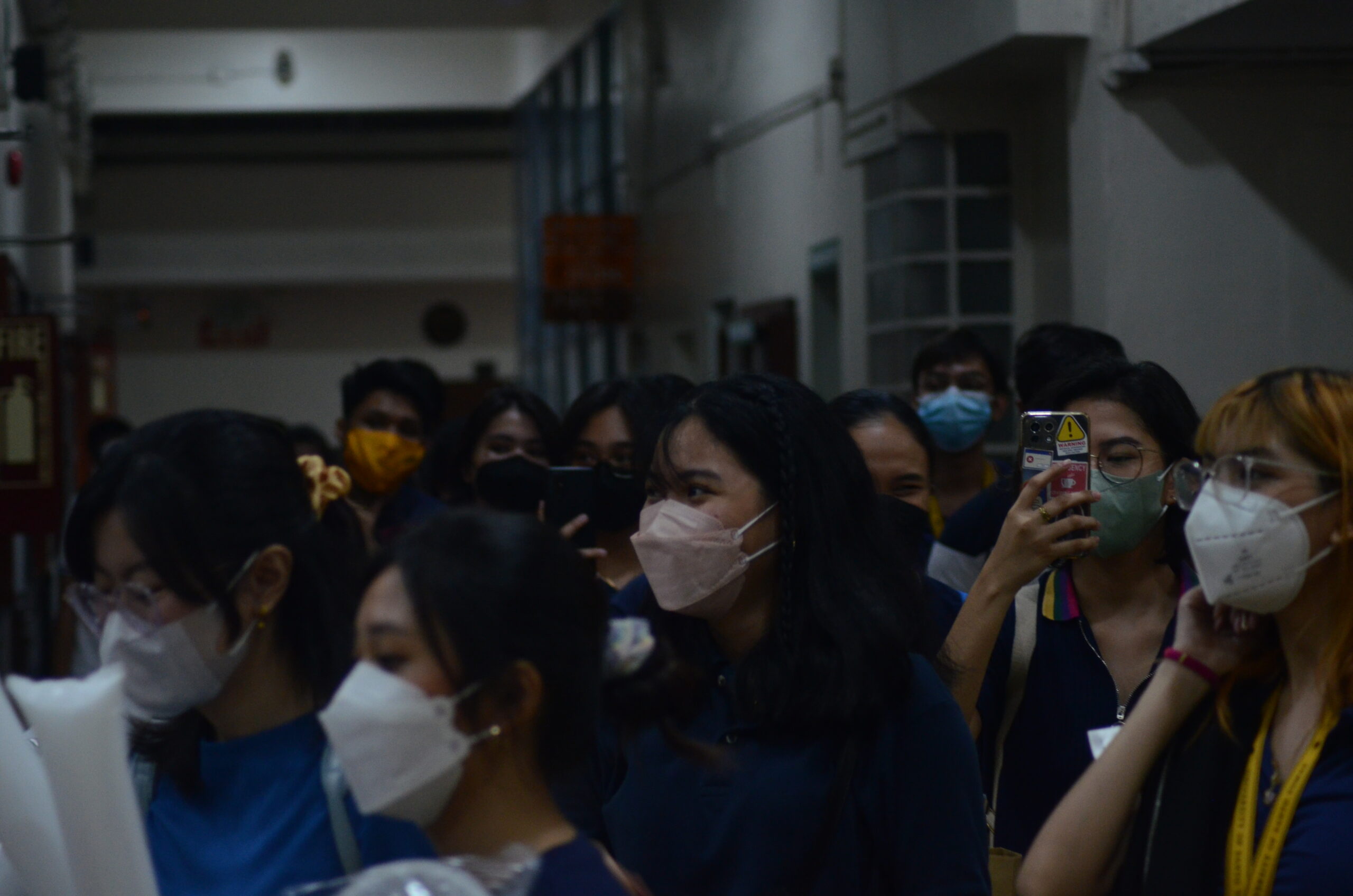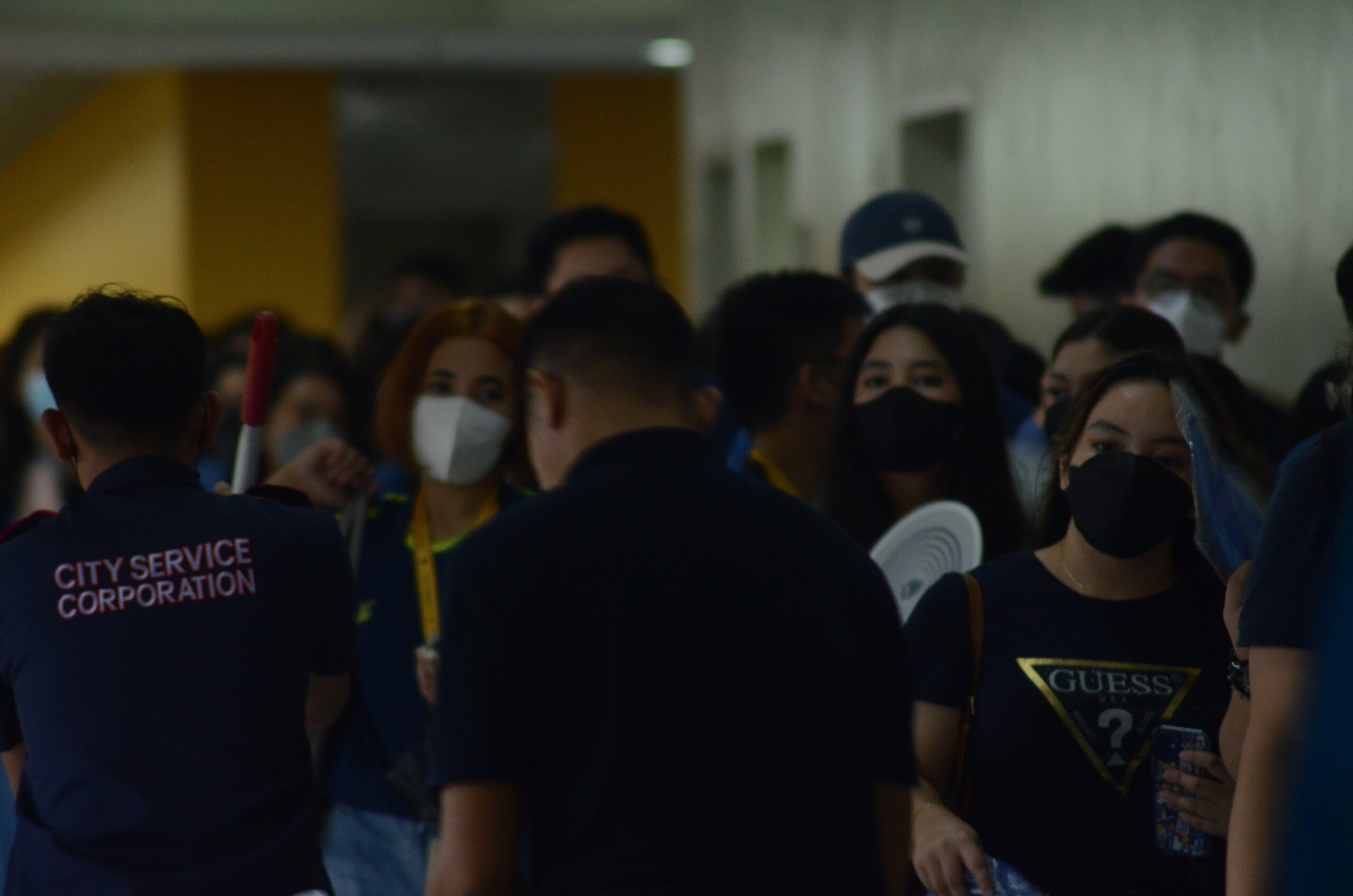
THE RESUMPTION of face-to-face classes in some courses has drawn both relief and anxiety among members of the Artlet community who now have to make some adjustments after two years of pure distance learning.
Faculty of Arts and Letters (AB Dean Prof. Marilu Madrunio recently confirmed that in-person classes would be offered in some courses of the Journalism and Communication programs.
Seven other programs of the faculty intend to adopt onsite learning this term namely Behavioral Science, Creative Writing, Economics, English Language Studies, History, Literature and Sociology.
AB Assistant Dean Alejandro Bernardo said the University’s Facilities and Management Office has started preparing the rooms for the return of in-person classes.
“We can only hope that the situation will get better in the coming days so we could hold limited face-to-face classes for some of our BA programs,” Bernardo told The Flame.
Maricar Yabut, a custodial staff of AB, welcomed the decision to resume onsite learning as this will allow employees like her to work full time.
“We were in a ‘no work, no pay’ setup. If there are no students, our workforce is skeletal,” Yabut said.
“(The halls) will be lively again, since there will be noise (from the students) again. Even though not everyone will be back, at least things are slowly getting back to normal,” she added.
Maricris Pascua, another AB custodial staff, said it is better to be more careful to avoid catching COVID-19 than to work fewer days and lose income.
UST Media Studies Assistant Professor Beyan Hagos has always preferred holding in-person classes, which he deems as the “natural learning environment.”
“I continue to consider online classes as a complement to (in-person) classes but never ever equal or substitute to,” he said.
A lecturer teaching skill-intensive journalism courses, Leo Laparan II, lobbied for in-person classes as it would enable him to personally supervise students, which had become impossible when the learning setup went virtual.
“The instructor only faces moving thumbnails of the photos of his or her students… Whereas if we are in eLEAP (computer lab), I could confirm one by one if they (the students) are doing the activities and check if their execution and all are correct,” he said, despite the health risks.
Concerns

While some members of the Artlet community hail the return of onsite learning, others are concerned about the higher costs it will entail.
“During the online classes, staying at home, everything is free. You don’t have to pay for transportation or for food,” third-year communication student Jedd Leaño said.
Journalism senior Sofia Valderama said she has to consider the higher fares and oil prices in preparing her budget.
The Philippine Statistics Authority has reported that the country’s inflation rose from 6.1% in June to 6.4% in July with transport (17.4%), food, and non-alcoholic beverages (6.3) among the main contributors.
Valderama still intends to commute to the University from her house in Pasig, believing that it will be more practical as in-person classes will only be held once or twice a week.
Leaño admitted that adjusting to the face-to-face setup would not be easy, and it would be best “to take your time and to allow yourself to get new to the things around you.”
“It’s also best to surround yourself with people that would help you to adjust,” he said.
Hagos also considered how the students, who had spent the previous two years studying online, may react to the change.
“Reversing this (the learning method) may not be easy to those students,” he said.
Safety protocols

Administrators have reminded students participating in the limited in-person classes to observe health and safety measures.
The University has also provided program heads with a checklist of requirements to ensure a safe return of face-to-face learning.
Yabut and Pascua assured the students that they regularly clean and sanitize the facilities to mitigate the pandemic risks.
“There are reminders (for COVID-19) posted on classroom doors, as well as temperature monitoring devices and a foot mat at the entrance of the building,” Pascua said.
Leaño admitted that he is still wary of the risks that accompany the onsite classes. However, he is confident that the University has “strong and strict health protocols.”
Laparan cited the need to learn to live with the virus since it is not expected to totally disappear but would eventually become endemic.
He pointed out that vulnerable children at the elementary level are permitted to have face-to-face classes, while adults in college who know how to handle themselves have limited opportunities to do so.
“It will all boil down to following health protocols for us to go back to the old face-to-face setup as that is the most effective (learning method) for me as an educator,” Laparan said.
University officials have said the return of students and academic staff to the campus would be gradual to ensure the proper retrofitting of facilities and effective implementation of safety measures. F – Jasmine Mae Alarde



